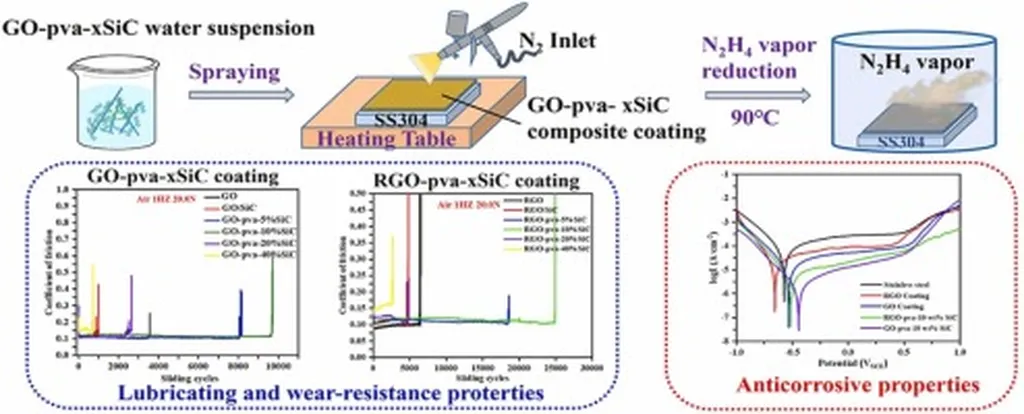In a groundbreaking development that could significantly bolster the energy sector, researchers have unveiled a novel approach to enhance the oxidation resistance of ceramic coatings on carbon-carbon (C/C) composites. This innovation, spearheaded by Xinfa Qiang from the Jiangsu Key Laboratory of Advanced Structural Materials and Application Technology at Nanjing Institute of Technology, promises to extend the lifespan and improve the performance of materials crucial for high-temperature applications.
The study, published in *Materials Research Express* (which translates to “Materials Research Express” in English), introduces a unique bead-chain-like morphology of silicon carbide (SiC) nanowires (SiCnws) synthesized via an aerogel carbothermal reduction method. These nanowires, with diameters ranging from 100 to 200 nm, are reinforced with SiO₂ beads exceeding 1 μm in diameter. The resulting SiCnws-reinforced CrSi₂-SiC/SiC coating on C/C composites was prepared using a two-step pack cementation process.
The comparative analysis revealed that the SiCnws-reinforced coating exhibited superior densification with fewer cracks and pores. This enhancement translates to remarkable improvements in oxidation resistance. During isothermal oxidation tests at 1773 K in static air, the SiCnws-reinforced coating showed only 14.98% mass loss after 30 hours, whereas the unreinforced coating suffered a significant 36.53% mass loss after just 14 hours.
Xinfa Qiang explained, “The SiC nanowires play a dual role. They promote the formation of a continuous SiO₂-Cr₂O₃ glassy layer during oxidation, which acts as a protective barrier. Simultaneously, they mitigate crack propagation through pinning and bridging effects, enhancing the structural integrity of the coating.”
The implications of this research are profound for the energy sector, particularly in applications requiring materials to withstand extreme temperatures. C/C composites are widely used in aerospace, nuclear energy, and advanced energy systems due to their exceptional thermal and mechanical properties. However, their susceptibility to oxidation has been a persistent challenge. The introduction of SiC nanowires as a reinforcing agent addresses this critical issue, potentially extending the operational lifespan of these materials and reducing maintenance costs.
Qiang further elaborated, “This innovation opens up new possibilities for the design and development of high-performance materials for extreme environments. The enhanced oxidation resistance can lead to more reliable and durable components in energy systems, ultimately contributing to safer and more efficient operations.”
The study’s findings not only highlight the potential for immediate commercial applications but also pave the way for future research in advanced materials science. As the energy sector continues to evolve, the demand for materials that can withstand harsh conditions will only grow. This research provides a crucial stepping stone towards meeting those demands, ensuring that the materials of tomorrow are as robust and reliable as they need to be.
In summary, the work by Xinfa Qiang and his team represents a significant advancement in the field of materials science, with far-reaching implications for the energy sector. By leveraging the unique properties of SiC nanowires, they have developed a coating that significantly enhances the oxidation resistance of C/C composites, offering a promising solution to a longstanding challenge. As this research continues to be explored and refined, it has the potential to shape the future of high-temperature materials and their applications in critical industries.

